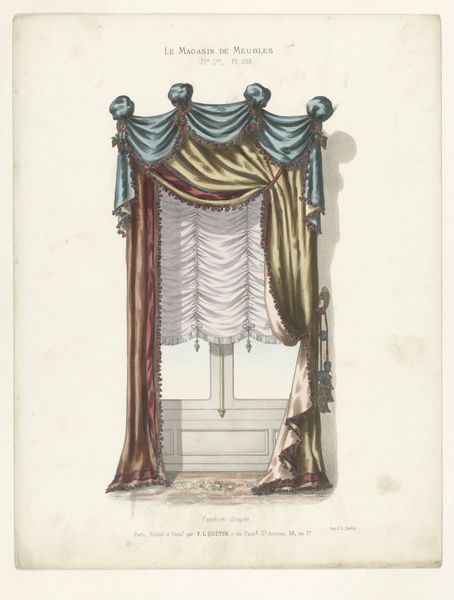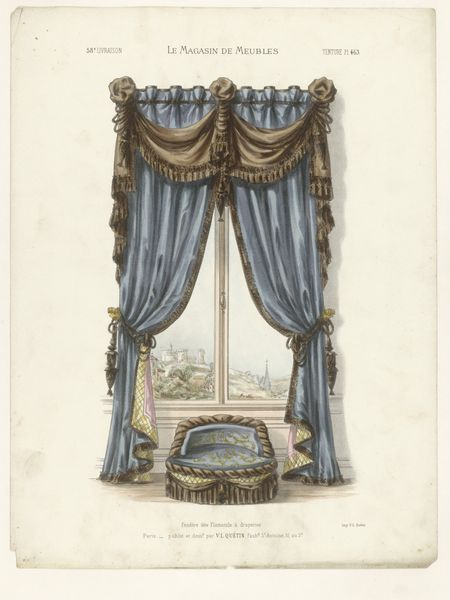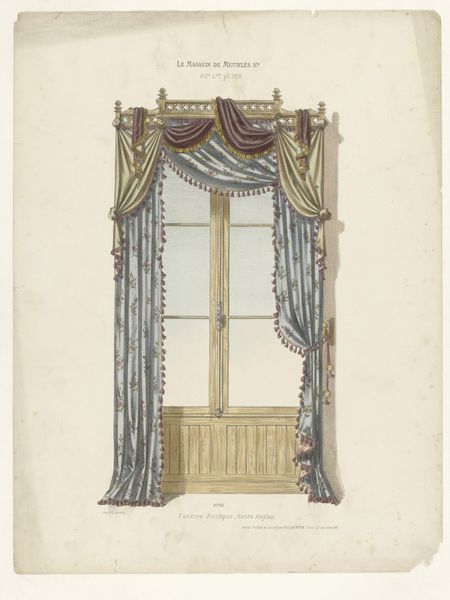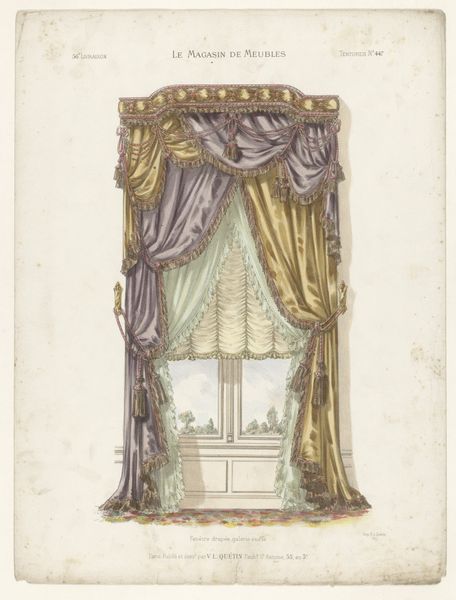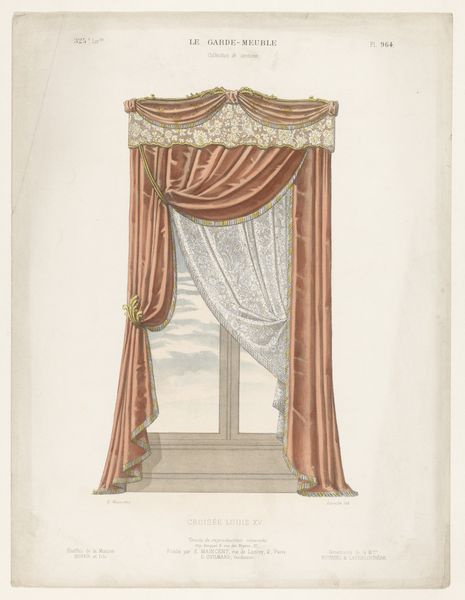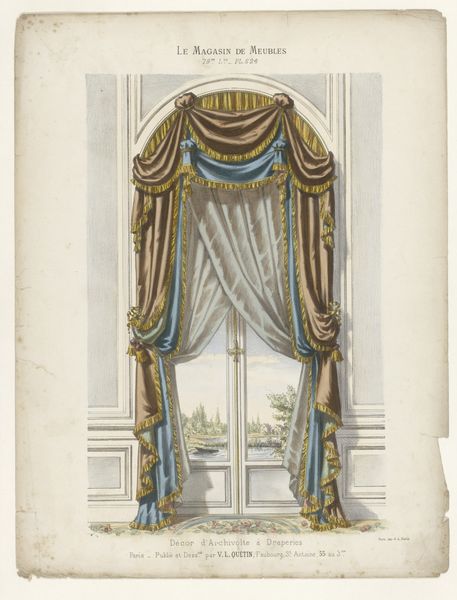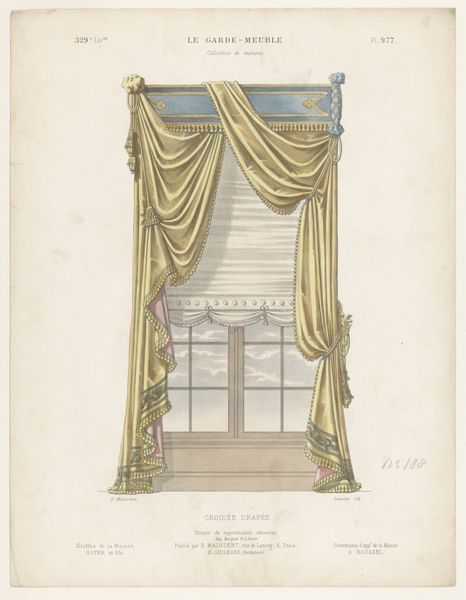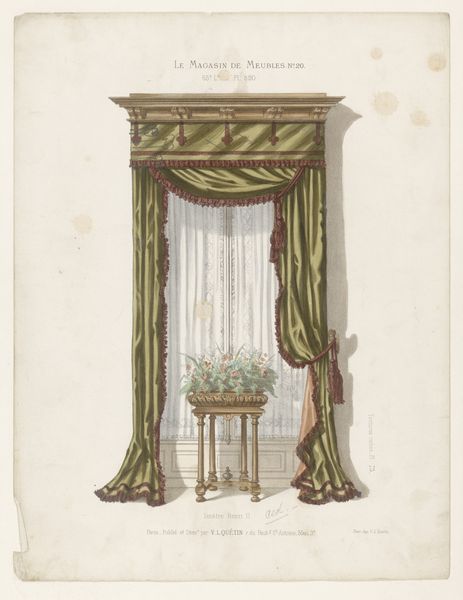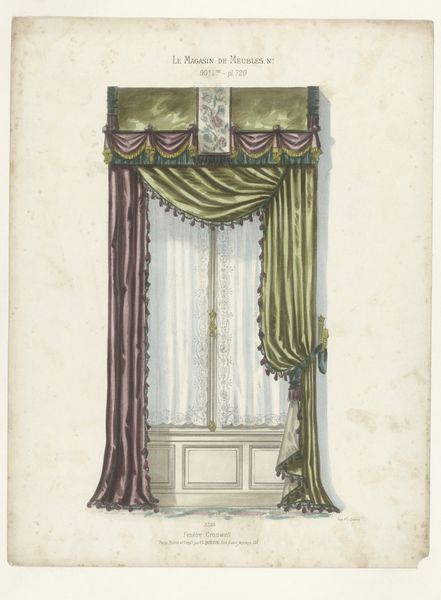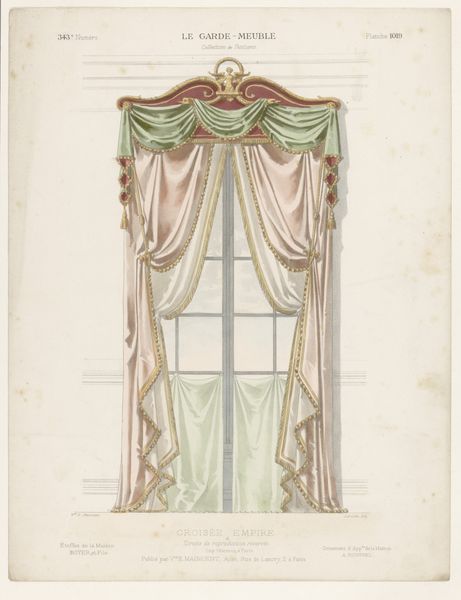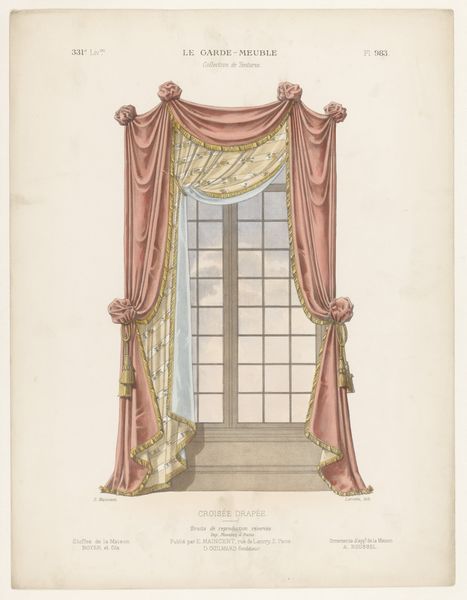
drawing, print, watercolor
#
drawing
# print
#
watercolor
#
coloured pencil
#
cityscape
#
watercolour illustration
#
decorative-art
Dimensions: height 360 mm, width 275 mm
Copyright: Rijks Museum: Open Domain
Curator: Here we have an exquisite piece called "Venster met gordijnen," which translates to "Window with Curtains," created sometime after 1878. It is a drawing and print, made with watercolor and likely coloured pencil. The creator, unfortunately, is anonymous. What's your first impression? Editor: My initial thought is ‘cozy grandeur.’ It evokes this sense of opulence blended with a kind of comfortable, lived-in aesthetic. I imagine it adorning a room with lots of personality—maybe in a home near a river. It almost feels like peering into a dollhouse! Curator: Precisely. Notice how the composition foregrounds the materiality: the various fabric weights, the patterns, even the precise trim detail. This piece almost operates as a prospectus, suggesting a specific quality of material consumption associated with the urban middle class during the late 19th century. Editor: Yes, absolutely. And I think the slightly muted tones—that rosy hue contrasting with the floral—enhance that effect, grounding it. It hints at tradition and status but doesn't feel overtly flashy. Is this possibly an ad of some sort? Curator: Exactly! Below the illustration are inscriptions that confirm the image was published as a display from "Le Magasin de Meubles," advertising curtains and tapestries crafted by V.L. Quétin. Note how even the scene visible through the window merges art with commodity; here, nature almost serves as decoration! Editor: The way light catches on the silk drapes—divine! Thinking about Quétin’s workshop…what would their days have been like? How did the rise of interior decorating impact labor and the artisanal experience? I would've loved being there. Curator: These are crucial questions, and thinking of this work as 'decorative-art' also reminds us that artistic skill was often intertwined with labor—an artistic statement intimately bound up in production and marketing, which challenges the art world's established hierarchies. Editor: True! The level of detail— the tassels, the shading—suggests dedication to the craft of making a desirable product. I look at it and dream of a life of simple luxury. A window, a river, lovely textiles. What more could one ask? Curator: Seeing beyond the window dressings reveals larger social dynamics around the material aspirations of the aspiring 19th century urban consumer. It certainly prompts us to rethink the social impact of decor and design. Editor: It has also given me the impetus to rethink how an object so commonplace can have an enormous cultural depth. I will certainly ponder more about where my curtains were crafted, what narratives are concealed within their folds!
Comments
No comments
Be the first to comment and join the conversation on the ultimate creative platform.
